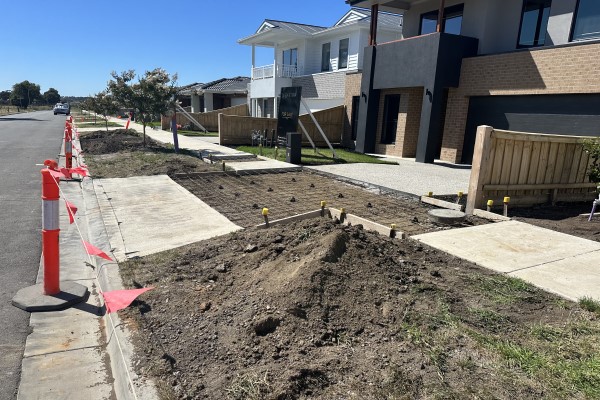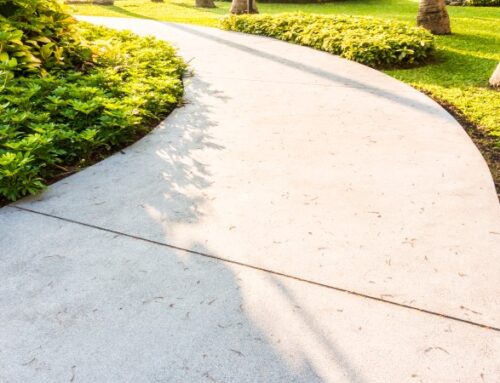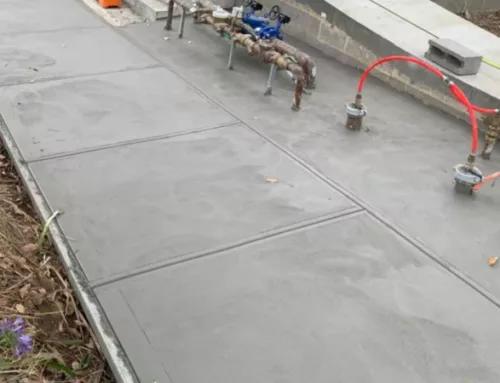As Melbourne’s population continues to surge, the demands on its urban infrastructure are intensifying, especially in the realm of pedestrian mobility. With more residents, commuters, and visitors moving through the city on foot each day, footpaths have evolved from simple thoroughfares to essential components of public space design.
This rising urban density is prompting city planners and developers to prioritise durable, well-constructed walkways that can withstand high foot traffic while maintaining safety and accessibility. The growing importance of footpath construction in Melbourne is not just about laying concrete—it’s about building future-ready infrastructure that supports community movement, enhances livability, and withstands the test of time.
For this reason, choosing the right footpath contractor in Melbourne is now a strategic decision. Experience, materials, and compliance with local regulations play a critical role in shaping the pedestrian experience in one of Australia’s fastest-growing cities.
Urban Density Is Reshaping Melbourne’s Footpath Needs
Why is Melbourne’s Growing Population Increasing the Need for Upgraded Footpaths?
Melbourne’s ongoing urban expansion is reshaping how public infrastructure is planned and built. With more people living, working, and commuting in compact city zones, the pressure on Melbourne city footpaths is at an all-time high. In densely populated areas like Docklands, Southbank, and Richmond, footpaths aren’t just walkways—they’re high-traffic arteries critical for daily movement.
As urban development intensifies, footpaths must now support greater pedestrian volume, meet accessibility standards, and maintain long-term durability under constant use.
How is Footpath Construction in Melbourne Adapting to Urban Development Pressure?
To meet rising demand, footpath construction in Melbourne has shifted toward smart, resilient design. Key changes include:
- Use of stronger materials like reinforced concrete and exposed aggregate
- Wider walkways to reduce pedestrian congestion
- Improved drainage to prevent water damage
- Compliance with DDA and local council regulations
These streetscape upgrades are essential to future-proof infrastructure and enhance walkability in high-growth suburbs and business precincts.
Why Quality Matters in High-Density Zones
When footpaths fail to keep up with city growth, safety and accessibility suffer. Cracked or narrow footpaths can limit mobility and impact daily life for residents, particularly the elderly and those with disabilities. As a result, councils and developers are prioritising durable walkway solutions that can withstand Melbourne’s urban development pressure.
Working with Experienced Footpath Contractors in Melbourne
Addressing these challenges requires a more comprehensive approach. A trusted footpath contractor in Melbourne must understand city planning demands, surface performance, and streetscape integration. Their role is not just to build, but to help shape infrastructure that supports a modern, connected city.
What Makes a Walkway Truly Durable in a Dense Urban Zone?
What are the Most Durable Materials for Melbourne City Footpaths?
In high-density environments, footpaths must do more than provide a walking surface—they must withstand constant pressure from foot traffic, weather conditions, and even light vehicle use in some areas. That’s why durable concrete footpaths and robust surface options, such as exposed aggregate and stone pavers, have become the go-to choices for city infrastructure projects.
Concrete offers strength and longevity, while exposed aggregate provides added grip and visual appeal, especially important in public space design. Selecting the right footpath materials in Melbourne is crucial for ensuring a low-maintenance, long-lasting result.
| Material | Why It’s a Good Choice | Ideal Use Cases |
| Reinforced Concrete | – High load-bearing strength – Long lifespan – Minimal maintenance | CBD zones, commercial areas, and schools |
| Exposed Aggregate | – Excellent slip resistance – Visually appealing – Surface durability | Parks, civic spaces, and premium residential footpaths |
| Concrete Pavers | – Easy to replace individually – Design flexibility – Good wear resistance | Laneways, heritage areas, decorative public zones |
| Asphalt + Concrete Edge | – Quick to install – Cost-effective – Flexible under movement with strong edging | Shared paths, suburban walkways, and low-traffic pedestrian areas |
| Bluestone (Natural Stone) | – Very durable – Weather-resistant – Matches Melbourne’s heritage aesthetic | Historic streetscapes, high-end developments, and city laneways |
Why Drainage and Slope Matter for Long-Lasting Footpaths
- Prevents Water Damage
- Standing water leads to cracks, erosion, and early surface deterioration.
- Proper drainage extends the life of concrete and paver surfaces.
- Reduces Slipping Hazards
- Sloped surfaces help direct water away from walkways.
- This keeps the footpath dry and safer for pedestrians, especially in rainy seasons.
- Supports Structural Stability
- Poor drainage can weaken the sub-base, causing the footpath to sink or shift.
- A well-drained base ensures the walkway stays level and secure over time.
- Improves Maintenance Efficiency
- Sloped and drained footpaths dry faster, making them easier to clean and maintain.
- Prevents the build-up of moss or debris in low-lying sections.
- Meets Council & Accessibility Standards
- Melbourne City Council guidelines require proper slope and water run-off planning.
- Ensures compliance with the Disability Discrimination Act (DDA) for public accessibility.
How Do Dense Urban Zones Affect Walkway Durability?
In crowded areas like Melbourne’s retail strips, school zones, and public transport corridors, footpaths are under constant stress. This includes:
- Heavy daily foot traffic
- Exposure to weather extremes
- Pressure from bikes, prams, and service carts
- Vibration from nearby vehicle traffic
To remain functional and safe over time, long-lasting footpaths must combine material strength with design foresight. Reinforcement mesh, proper sub-base preparation, and surface sealing all contribute to increased lifespan and reduced maintenance costs.
Key takeaway for urban projects:
A truly durable walkway strikes a balance between material choice, construction quality, drainage design, and site-specific needs. For planners and builders, understanding how these elements interact is crucial for delivering infrastructure that can withstand Melbourne’s urban demands.
The Role of Experienced Contractors in Building Smarter Footpaths
Hiring the right contractor isn’t just a checkbox—it’s a crucial part of ensuring public safety, long-term performance, and regulatory compliance. Here’s why working with an experienced footpath contractor in Melbourne matters:
Skilled & Council-Approved Matters
Why it’s essential:
- Only council-approved contractors are familiar with local regulations, permits, and construction standards.
- Reduces the risk of delays, rework, or non-compliance fines.
What to look for:
- Relevant licences, past city projects, and council endorsements.
Ensures Safety & Accessibility from Day One
Why it’s essential:
- Poor workmanship can result in uneven surfaces, trip hazards, and water pooling.
- A reliable contractor ensures the path is safe for everyone, including wheelchair users, pram pushers, and the elderly.
What to look for:
- Experience with DDA-compliant design and accessible gradient execution.
Future-Proofing with Quality Workmanship
Why it’s essential:
- Well-built paths withstand weather stress, heavy foot traffic, and ground movement.
- Reduces the need for constant repairs and pathway maintenance in Melbourne’s high-use zones.
What to look for:
- Contractors who use reinforced materials, proper sub-base prep, and long-wear finishes.
Specialised Knowledge for Complex Urban Zones
Why it’s essential:
- High-density areas, such as the CBD or transport hubs, require more than standard footpath work.
- Infrastructure specialists know how to coordinate with utilities, traffic, and landscaping teams.
What to look for:
- A contractor with multi-project experience and coordination capabilities.
Hiring an experienced footpath contractor in Melbourne is an investment in safety, durability, and community satisfaction. The right team doesn’t just build a walkway—they help build a smarter, more connected city.
Vendor Checklist: How to Choose the Right Footpath Contractor in Melbourne
Before hiring a contractor for your next public footpath project, make sure they meet the following criteria:
1. Council Approval & Licences
- Are they a council-approved contractor in Melbourne?
- Do they have all the required permits and insurances?
- Have they completed similar works within your LGA?
2. Experience & Reputation
- Do they have proven experience in footpath construction in high-density areas?
- Can they provide project references or a portfolio?
- Are they familiar with Melbourne-specific compliance standards?
3. Safety & Accessibility Standards
- Do they follow DDA (Disability Discrimination Act) guidelines?
- Can they design and build paths with safe slopes, tactile surfaces, and proper width?
- Are they committed to creating accessible and inclusive walkways?
4. Material & Design Knowledge
- Do they use durable materials, such as reinforced concrete or exposed aggregate?
- Can they suggest finishes that improve grip and longevity?
- Are they knowledgeable in public space design and streetscape integration?
5. Long-Term Maintenance Planning
- Do they offer warranties or maintenance plans for pathways after installation?
- Can they advise on preventive care for high-traffic areas?
- Do they build with future-proofing in mind?
6. Project Management & Communication
- Do they provide clear timelines and cost transparency?
- Can they coordinate with other contractors (e.g., for utilities or landscaping)?
- Are they responsive and easy to communicate with?
Pro Tip:
Ask for a formal quote that includes the full scope, cost estimates, and any exclusions. A professional footpath contractor in Melbourne will be transparent and confident in what they deliver.
Leadership Insight: Long-Term Planning Is Key to Sustainable Urban Mobility
In a fast-growing city like Melbourne, infrastructure choices made today will shape how people move, live, and interact tomorrow. As density increases and transport needs evolve, short-term patchwork fixes are giving way to future-focused, sustainable infrastructure strategies.

The image used for illustration purposes. Infra Projects Group is not the owner or creator of the image. (Photo Credit : Freepik.com)
1. Total Cost of Ownership Should Drive Decision-Making
Many councils and developers still focus on upfront construction costs when budgeting for public footpaths. However, leaders in city planning recognise that the real cost lies in the path’s full lifecycle.
- Durable materials, such as reinforced concrete or exposed aggregate, may cost more initially, but they save significantly in the long term through reduced pathway maintenance and downtime.
- A well-built path reduces trip hazards, drainage issues, and the need for repairs.
- Incorporating TCO (Total Cost of Ownership) into planning reflects mature, long-term urban planning leadership that prioritises value over volume.
2. Planning with Future Density in Mind is Non-Negotiable
Melbourne’s population is forecast to exceed 6 million by 2031, with growth concentrated in urban and peri-urban areas, such as Sunshine, Preston, and Dandenong.
- Footpaths in these areas will accommodate a mix of pedestrians, cyclists, mobility devices, and even micromobility platforms, such as e-scooters.
- Narrow or outdated walkways can’t scale to support this mix.
- Today’s designs must consider multi-modal use, safe setbacks, and accessibility for all.
Forward-thinking councils are working with infrastructure specialists and footpath contractors in Melbourne to build wider, stronger paths that support this shift.
3. Reactive Maintenance is Expensive, Disruptive & Regressive
Traditional maintenance strategies rely on reactive repair—fixing cracks, potholes, or uneven surfaces only once they pose a visible risk. But this model is increasingly unsustainable:
- It increases total cost, shortens infrastructure lifespan, and exposes councils to liability.
- It also causes community frustration due to frequent disruptions, detours, and reduced accessibility.
- Instead, smart footpath design integrates water management, joint spacing, and material choices that minimise future intervention.
True sustainable infrastructure in Melbourne is proactive, not reactive, and that requires planning, not patching.
Leadership Takeaway
Leaders in public works, urban development, and civil engineering must adopt a long-view mindset. Whether you’re a council officer, city planner, or private developer, your decisions regarding footpath design and materials will have a direct impact on mobility, equity, and liveability for decades to come.
Choosing future-ready footpaths and investing in sustainable design today ensures that Melbourne remains a walkable, safe, and connected city tomorrow.
Conclusion: Walkways Built for the Future of Melbourne
Meeting the demands of Melbourne’s evolving cityscape means investing in walkways that are built to last—solutions that support daily use across communities, commerce, and tourism.
As population density increases, so does the importance of thoughtful footpath construction in Melbourne. From material selection and drainage planning to council compliance and future growth forecasts, every decision contributes to the walkability and functionality of the city.
Partnering with an experienced footpath contractor in Melbourne isn’t just about building to code—it’s about building for long-term value, community safety, and sustainable growth. Walkways that are properly designed today will serve as vital connections for tomorrow’s Melbourne.
Whether you’re a council, urban planner, or property developer, now is the time to prioritise future-ready footpaths that reflect smart investment, community-first thinking, and lasting urban design.
FAQs
1. What materials are best for footpath construction in Melbourne?
The most durable materials include reinforced concrete, exposed aggregate, and high-quality concrete pavers. These options offer excellent wear resistance, weather tolerance, and low maintenance—ideal for Melbourne’s urban environments.
2. Why is proper drainage important in footpath construction?
Poor drainage can lead to water pooling, surface cracks, and long-term damage. Sloped walkways and well-designed run-off systems help extend the life of the footpath and reduce maintenance costs.
3. How do I choose the right footpath contractor in Melbourne?
Look for council-approved contractors with proven experience, insurance, and local references. A good contractor will understand Melbourne’s compliance standards and deliver safe, long-lasting, and accessible footpaths.
4. What makes a walkway “future-ready”?
A future-ready footpath is built to withstand population growth, heavy foot traffic, and changing mobility needs. It features durable materials, smart design (such as wider paths and smooth gradients), and a minimal need for reactive maintenance.
5. What’s the difference between short-term repair and long-term footpath planning?
Short-term repairs address immediate surface issues, while long-term planning considers total cost of ownership, drainage design, material longevity, and future usage demands. Sustainable infrastructure prioritises long-term performance over quick fixes.
6. Are there council regulations for footpath construction in Melbourne?
Yes. Melbourne City Council and other local councils have strict guidelines for materials, accessibility, slope, drainage, and compliance with the Disability Discrimination Act (DDA). Working with experienced contractors ensures your project meets all requirements.







